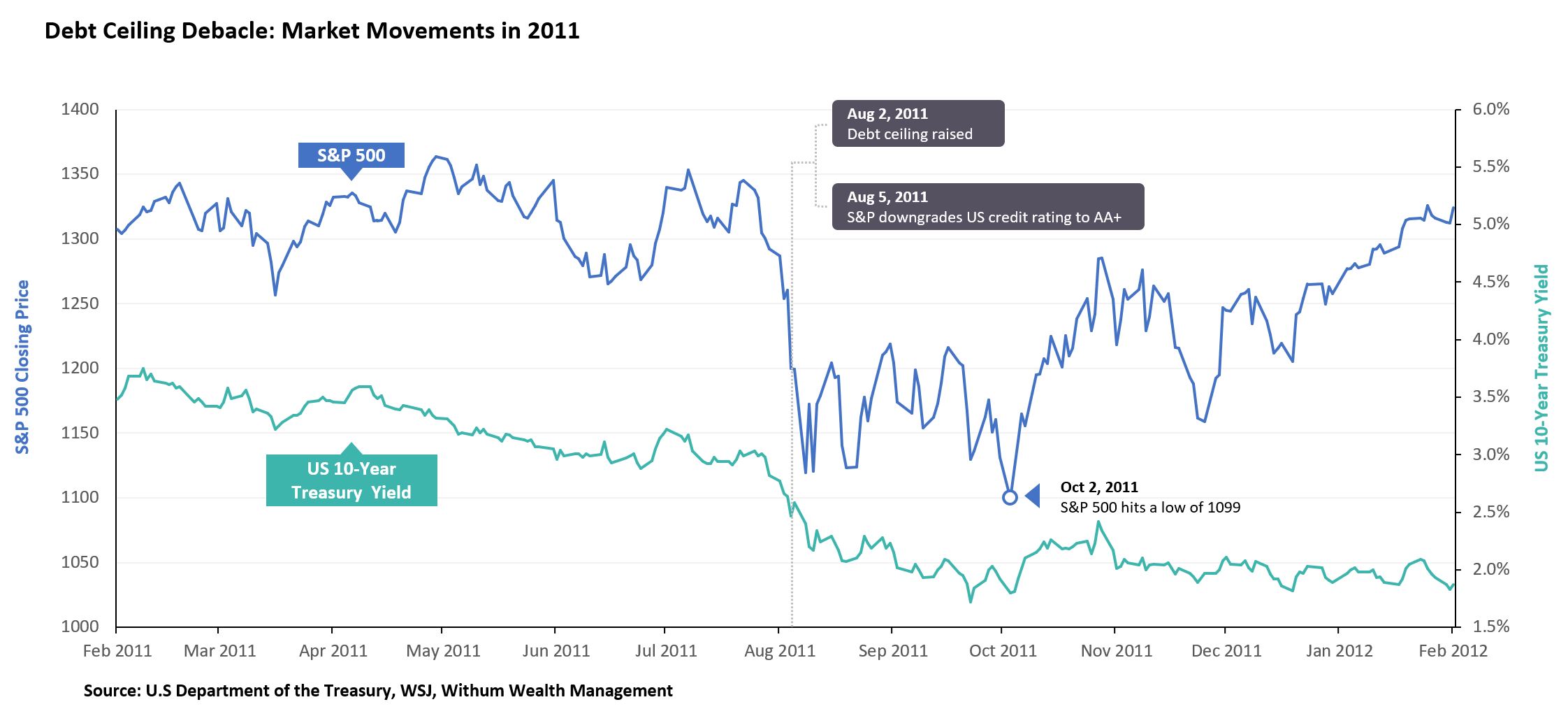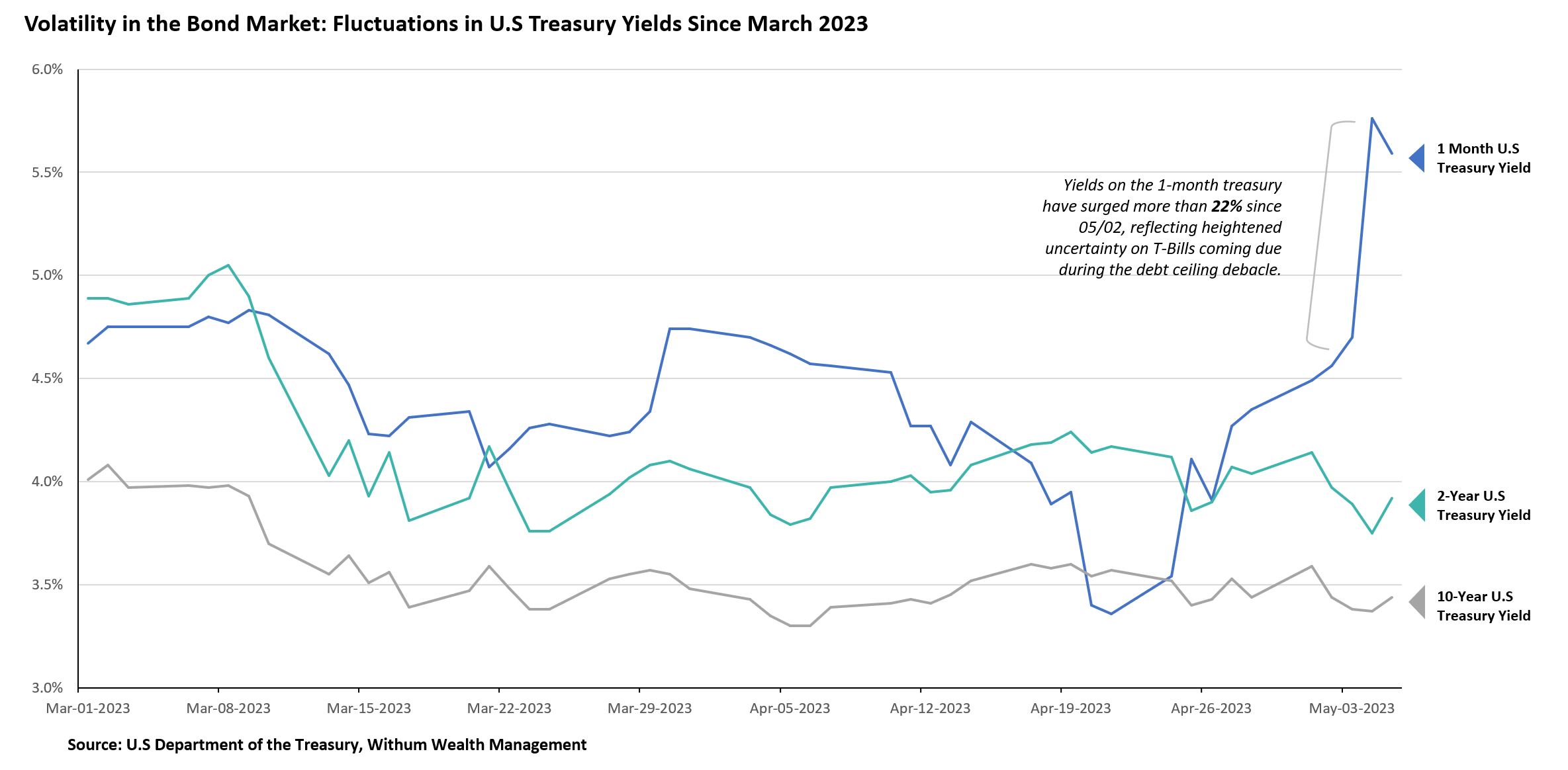How are we here and what is the debt ceiling?
Congress last agreed to raise the federal debt ceiling in December 2021 by $2.5 trillion, but technically, that limit was reached in January of 2023. Treasury Secretary Janet Yellen wrote a letter to Congress in January explaining as much. The debt limit (or ceiling) represents the total amount of money the federal government can borrow to satisfy obligations such as Social Security, Medicare benefits, defense spending, interest on federal debt and other programs. These are spending areas already authorized by Congress.
Why haven’t we defaulted on our debt since January?
The US Treasury can, and has, stepped in to take what they describe as ‘extraordinary measures’ to help ensure the limit is not exceeded. These steps include suspending investments in the Civil Service Retirement and Disability Fund, the Postal Service Retiree Health Benefits Fund in addition to suspending investments in the Government Securities Investment Fund (G Fund) for the Federal Employees Thrift Saving Plan. By taking these actions, Treasury expects to be able to continue financing federal obligations including paying interest on US Treasuries for several months before reaching what is referred to as the X-date, or the debt limit of $31.381 trillion. The X-date is projected to be reached in early June 2023. One of the factors impacting the X-date is the variability of tax revenues. Based on recent tax payments from individuals and corporations received at the April deadline including the influx of payments still to come from residents of California that were granted extensions due to severe weather, the X-date may be extended for several weeks beyond early June. This is to say there is a window of time for Congress to come to an agreement on the debt ceiling.
What can history tell us?
While the debit limit has been raised several times over the last decade, the most notable example last occurred in 2011. Let’s recall how this unfolded 12 years ago. In the wake of the Great Financial Crisis, the debt ceiling had been raised between 2008 and 2010. While the US economy was on the long road to recovery Congress was divided after Republicans won control of the House during the 2010 mid-terms. In early 2011, the debt ceiling approached. At the time Senate Minority Leader, Mitch McConnell proposed a rule that would allow the president to increase the debit limit while allowing Congress to overrule an increase with a two-thirds vote. Ultimately, that effort was not adopted, and political brinksmanship ensued. Ultimately, Congress and the president signed the Budget Control Act of 2011 to raise the debt ceiling in two steps with just a few days to spare. Nevertheless, credit rating agency Standard & Poor’s made a significant decision to downgrade the credit of US sovereign long-term debt from AAA to AA+ citing “weakened effectiveness, stability and predictability of U.S. policy making.” In contrast, Moody’s and Fitch maintained their AAA ratings on US Treasuries, however the damage was done. From a stock market perspective, the S&P 500 fell approximately 17% from peak to trough in just a few months before staging a rally to finish the year. Most of the volatility occurred leading up to the agreement and ultimate downgrade. Paradoxically, the yield on the 10-year Treasury began the year near 3.3% and subsequently fell below 2% by the end of 2011 as investors fled to safety. According to the Government Accountability Office, the delays in raising the debt ceiling cost the US government approximately $1.3 billion in added borrowing costs in fiscal year 2011.
What can we expect in the weeks ahead?
In late April, the US House of Representatives narrowly passed the Limit, Save, Grow Act of 2023 which would raise the debt ceiling by $1.5 trillion stretching to approximately March 2024 while cutting spending by $4.5 trillion. Democrats and the president have stated they will not consider any spending cuts attached to an agreement to raise the limit. From a political standpoint, this is to be expected. We should continue to hear similar harsh rhetoric from both sides of the aisle in the coming weeks as politicians test the boundaries of this debate. 11th hour resolutions are not uncommon with government impasses. As a result, stock market volatility, will likely increase as the deadline approaches. While volatility has declined over the first four months of the year, we’ve seen substantial spikes coinciding with major headlines about the banking sector crisis.
Similarly, the bond market has also experienced significant volatility in recent weeks. The yield on the one-month US Treasury at the beginning of April hovered around 4.5% before plummeting to 3.3% in late April. Most recently the yield on the one-month Treasury has spiked above 5.5% in May highlighting concern about bills that mature during the debt ceiling debate. Conversely, the yield on the 2-year Treasury has declined to less than 4% in May after peaking above 5% in early March while the same is true for the 10-year Treasury. A scenario in which a deal is not brokered would cause interest rates to increase to compensate for default risk and roil financial markets until a resolution is reached.
There is a high likelihood Congress will unfortunately stretch this debate close to the deadline before making a deal. Hopefully, like every debt ceiling debate before this one, a resolution will be reached allowing the limit to be increased. This represents yet another short-term obstacle investors will need to overcome. This is an opportunity to remind ourselves about the importance of remaining focused on the benefits of long-term investing.
Of course, if you have questions or concerns, please do not hesitate to contact your wealth advisor.
Please remember that past performance may not be indicative of future results. Different types of investments involve varying degrees of risk, and there can be no assurance that the future performance of any specific investment, investment strategy, or product (including the investments and/or investment strategies recommended or undertaken by Withum Wealth Management (“WWM”), or any non-investment related content, made reference to directly or indirectly in this blog will be profitable, equal any corresponding indicated historical performance level(s), be suitable for your portfolio or individual situation, or prove successful. Due to various factors, including changing market conditions and/or applicable laws, the content may no longer be reflective of current opinions or positions. Moreover, you should not assume that any discussion or information contained in this blog serves as the receipt of, or as a substitute for, personalized investment advice from WWM. WWM does not make any representations or warranties as to the accuracy, timeliness, suitability, completeness, or relevance of any information prepared by any unaffiliated third party, whether linked to WWM’s web site or blog or incorporated herein and takes no responsibility for any such content. All such information is provided solely for convenience purposes only and all users thereof should be guided accordingly. To the extent that a reader has any questions regarding the applicability of any specific issue discussed above to his/her individual situation, he/she is encouraged to consult with the professional advisor of his/her choosing. WWM is neither a law firm nor a certified public accounting firm and no portion of the blog content should be construed as legal or accounting advice. A copy of the WWM’s current written disclosure Brochure discussing our advisory services and fees is available for review upon request or at www.withumwealth.com. If you are a WWM client, please contact us in writing, if there are any changes in your personal/financial situation or investment objectives for the purpose of reviewing, evaluating, or revising our previous recommendations and/or services, or if you would like to impose, add, or to modify any reasonable restrictions to our investment advisory services. Unless, and until, you notify us, in writing, to the contrary, we shall continue to provide services as we do currently. Please also remember to advise us if you have not been receiving account statements (at least quarterly) from the account custodian.




